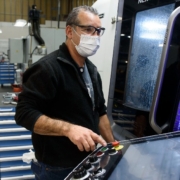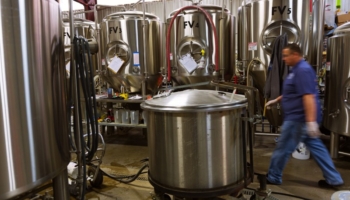Industry Scorecard: Employment Data Points to a Healthy Manufacturing Economy, but High Costs Are a Headwind
The state of US manufacturing is a mixed bag.
There are plenty of positives. Total US manufacturing employment is poised to exceed 13 million workers for the first time since December 2008. (Manufacturing employment peaked in 1979, at just under 20 million.)
Overall, the economy has added 800,000 or so net manufacturing jobs during President Biden’s tenure — including those regained after the COVID hit. Employment had grown by roughly 500,000 jobs during President Trump’s tenure, to 12.8 million jobs, but dropped off a cliff during the pandemic — to 12.1 million. The comeback is significant, and a counter narrative to the conventional wisdom that automation would stymie job growth.
Jobs continue to be reshored at a brisk pace. Harry Moser’s Reshoring Initiative (RI) measures the intent of US companies to reshore manufacturing jobs, and while activity slowed in 2023, during Biden’s tenure over a million jobs (1,099,708) have been announced.
Cost parity would bring more outsourced work back to the US — a lot more. Asian manufacturing costs are 20 to 30 percent less expensive in most cases, according to Moser. Reducing US costs could have a huge impact — Moser estimates the US would add 5 million new manufacturing jobs by achieving true cost parity and balancing the trade deficit.
But if manufacturing cost is a jobs fulcrum, headwinds might continue to limit overall employment and the vitality of the sector.
For one, as much as public investments in semiconductor, battery, and EV infrastructure are catalyzing job growth (comprising nearly 70 percent of all reshoring job announcements in 2022, per RI), inflation is the defining price trend and high-priced products the rule.
“My fear is that the [semiconductor and battery] factories will be uncompetitive and therefore they won’t last,” Moser says, “in part because they don’t solve the underlying problem, which is that US manufacturing cost is too high. Biden understands this [semiconductor manufacturing] is big, and you have to do something about it,” he adds. “Yet bribing companies to build factories [to make overpriced chips] isn’t the long-term answer.”
Inflation is also constraining demand in other growth industries like food and beverage — as is the high-value of the dollar helping imports and hurting exports. Higher borrowing costs are also limiting investments in equipment and technology.
The Biden administration hopes that IRA, CHIPs, and other public investments will drive down the cost of domestic manufacturing – a spending halo that draws more workers into manufacturing, to staff a new generation of companies, more automated and efficient than ever before. So far they seem to have had the opposite effect.
For his part, Moser’s optimistic about trends that would work to drive down the cost of US manufacturing, long term. He cites:
- Sustained reshoring: 80 percent of companies operating offshore say they are or will be reshoring; geopolitical risk is the number one driver of reshoring — and here to stay.
- The trade deficit is flat to down slightly, after decades of growing.
- Manufacturing employment is up for the last 14 years.
- A positive demographic shift in the workforce: university enrollment is declining, and apprenticeships and tech-college enrollment is growing.
- Mexico is surging, also pulling in imports from the US.
- AI and automation are poised to close much of the cost gap.
The Biden “industrial policy” is also just getting started. Only a small percent of the dollars to supercharge US semiconductor manufacturing have been spent. And data compiled from companies using Moser’s Total Cost of Ownership Estimator show that about 25 percent of what they now make offshore and import would be more profitably reshored.
Against this positive backdrop, there’s room for optimism.
Bart Taylor is a Moss Adams BDE and MFG Insider contributor. Reach him at bart.taylor@mossadams.com.



